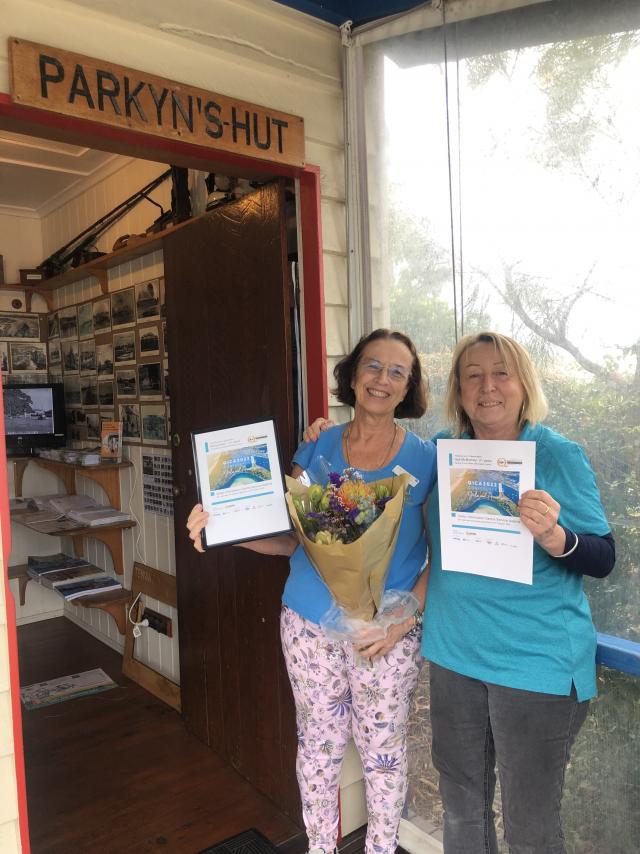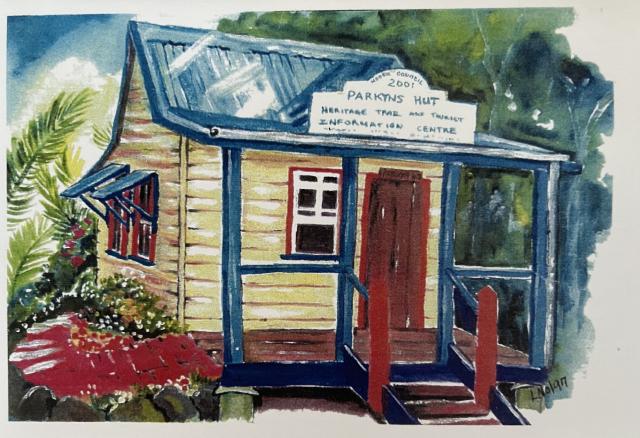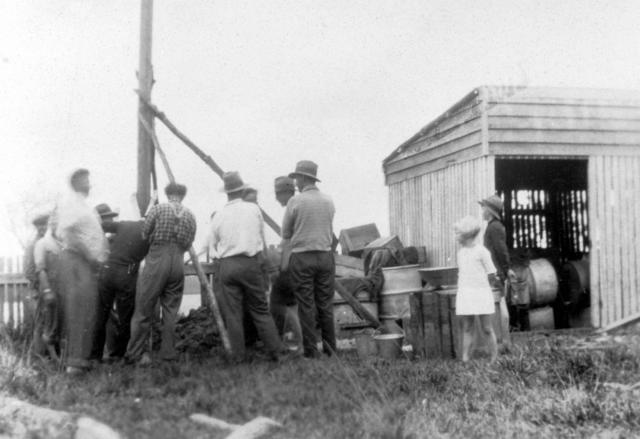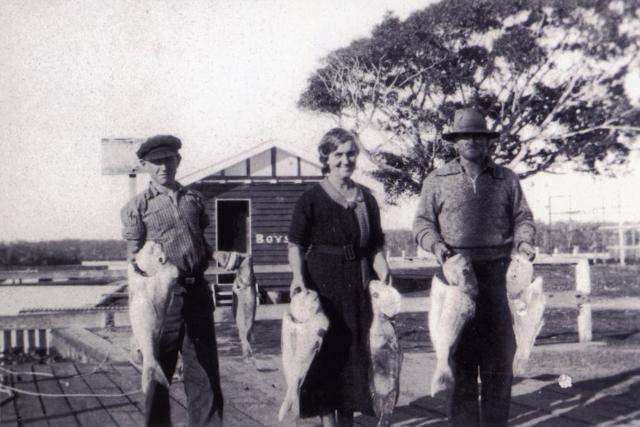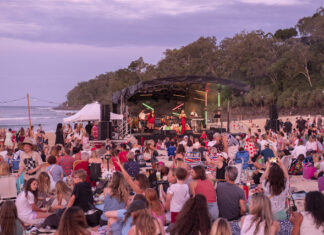Unless you live under a rock (or last week’s NT didn’t land on your lawn) you’d already know that the Parkyn’s Hut Tewantin Explore Centre won the big gong for best volunteer-run visitor information centre for the second time in three years at the annual Queensland Information Centres Association (QICA) conference, hosted in Noosa last week.
What is probably less known is the incredible amount of time and energy put in by a team of volunteers over 21 years since the hut first appeared, turning it into such a vital hub of local history and current attractions.
Not being a tourist in my own town, I don’t spend a lot of time in visitor centres, but I do love my occasional visits to the old miner’s hut, especially when the exuberant Gail McBurney, this year’s recipient of a 20-plus-years’ service award, is on duty.
Gail never lets me leave without imparting some fascinating snippets of history I’ve never heard before, and such was the case last week when I dropped in to congratulate her and her team of 40 to 50 cheery vollies who donate four to six hours a week.
I completely understand her enthusiasm because, inside and out, the beautifully restored miner’s hut is surrounded by living history.
But while the Parkyns are arguably Noosa’s most fascinating clan, the hut was not originally theirs, and in fact has its own interesting history, which is a good place to start, since it was Gail’s gift last week.
The hut began life as a miner’s one-room residence in the Monkland district of Gympie, but in about 1920 its owner, builder Jack Hart, had it transported by bullock team to his block in Pelican Street, Tewantin where it served him well as a fishing retreat.
In 1938 Mr Hart, who was getting on, sold his block and hut to his neighbours, the Parkyns, who moved it to a better location and added a kitchenette.
During the early years of the war it was rented to Jack Heirdsfield, a World War I veteran and cobbler and odd jobber. The Parkyns always had an eye for a deal, so for reduced rent, Jack added a shower and a septic system, so that when he left it was good to go as Noosa Shire’s first short term accommodation, and the hut’s original iron rook and oiled hardwood walls attracted many visitors.
After 60 years the Parkyns finally sold the land with the hut in 1999 to make way for RSL parking space, and the RSL donated the hut to the newly-formed Tewantin Heritage and Historical Society.
In 2001 it was moved to its current site next to the Royal Mail Hotel on Poinciana Avenue, renovated and opened as an information centre.
Now to the Parkyns, who seem to have had their finger on the pulse of Noosa for well over a century.
Richard Bray Parkyn, a Cornish tin miner known as Dick, migrated to Gympie in the 1880s to become a manager at the gold mines.
In the early 1890s he passed through Tewantin and, like so many other mine managers from the digs, bought land on what had become known as Gympie Terrace, on the Noosa riverfront.
In 1896 he built one of the first proper houses on the Terrace, at what is now number 219. He called it Miner’s Rest but it was no shack or hut. It was a proper house.
In Gympie, Dick had met and married Margaret (Maggie) Shields. They had seven children, and in 1925, Dick and Maggie’s second son, John, known as Jack, and his Cornish wife, Daisy, whom he had met on a family trip home to England 20 years earlier, returned to Gympie Terrace and bought a boat called Miss Tewantin.
This was to be the foundation stone of the Parkyn dominance of the emerging tourism industry in Noosa.
Miss Tewantin was a 60-passenger launch, primarily used for transporting people from Tewantin to Noosa Heads and back, but it was also used for tourist trips to the lakes and to the Coloured Sands via the Teewah landing.
Sometimes it would also freight fish to Brisbane and bring back supplies, including materials that Jack used to build houses as part of his expansion at Munna Point and at the wharf he had established at Tewantin.
Around this time, Jack Parkyn, a true futurist, also decided to go off the grid that didn’t really exist yet, installing a wind generator to provide power for the family home and refrigeration for their bait shop.
Jack Parkyn saw the future of motorised tourism long before the opening of the Doonella and Weyba bridges in 1929 which united the river towns with Noosa Heads, and it might have been a portent of future opportunity when his precocious teenage son Howard and his mate Lionel Donovan lifted the chain and sped across the bridge in a borrowed car ahead of the official opening by approximately 15 minutes.
With road access, the Parkyn holdings at the Tewantin wharf and Munna Point campground went from success to success, eventually being sold back to the council at profit.
By this stage Jack was getting on a bit, but that didn’t stop him from sniffing out the situation and raising the alarm in March 1940 when Tewantin’s second pub fire in two years raged through the Tewantin Hotel, formerly Martin’s Hotel. Jack Parkyn’s swift reaction saved the lives of at least eight guests.
Howard, who was Jack and Daisy’s eldest son, attended high school in Gympie and planned to be an engineer, but the Great Depression put an end to that and he returned home to help his father in the family business.
In 1935 he caught a 206-kg grouper on a family boat, creating a Queensland record at the time. Obviously the boating side of the business was a passion and he and his brother grew their fleet of boats to around 30, as well as the Miss Tewantin, Miss Tewantin 2, and the prawn catcher Victory.
In 1965 the Duke and Duchess of Gloucester travelled aboard the Miss Tewantin during their visit to Noosa. The Parkyns sold the boat hire business the following year.
The original Parkyn home, Miner’s Rest, ended up with Jack and Daisy’s daughter, Bessie Smerdon, who renamed it Shieldston in honour of her mother’s maiden name.
In turn, it was passed onto her son, Jack Smerdon, in 1970. After Jack’s death in 2004, Shieldston House was moved to Pomona.
The Parkyn name and presence lives on in Tewantin. Just across the street from Parkyn Hut, Howard Parkyn’s audiologist grandson Nick runs the business he made his career after helping Howard with old age hearing issues. The family spirit prevails.
The writer acknowledges the assistance of Heritage Noosa.


